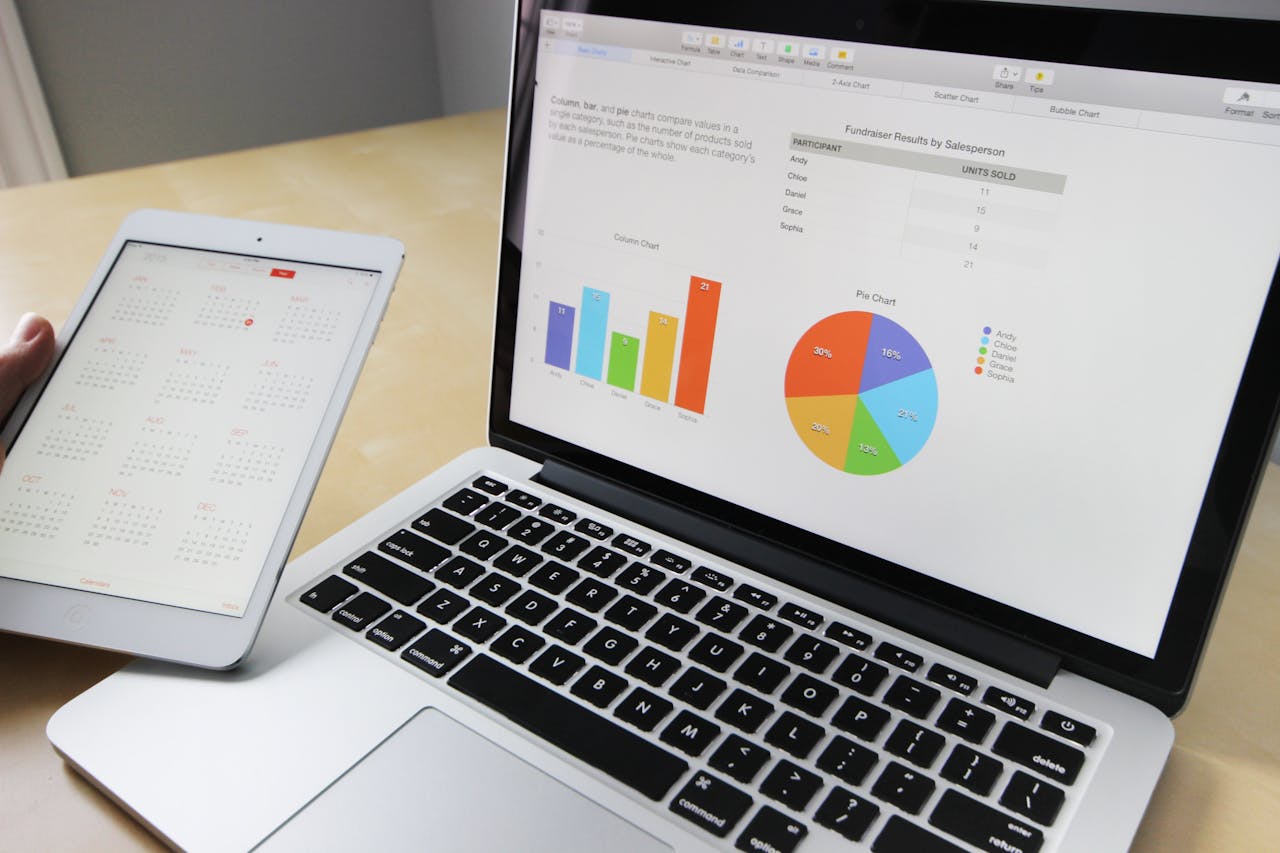Data analytics and business intelligence (BI) play a crucial role in today’s data-driven world. They provide organizations with valuable insights, helping them make informed decisions and gain a competitive advantage. However, to truly unlock the power of data, advanced analytics and predictive modeling are essential.
Advanced analytics goes beyond traditional BI methods, utilizing mathematical and statistical formulas to generate new information, recognize patterns, and predict outcomes. It enables organizations to dig deeper into their data, uncovering hidden insights that can drive business success. By leveraging advanced analytics, companies can optimize their BI systems, improve decision-making processes, and enhance overall performance.
Predictive modeling, a branch of advanced analytics, takes data analysis to the next level. By utilizing historical data, statistical modeling techniques, data mining, and machine learning algorithms, predictive analytics enables organizations to forecast future events, identify risks and opportunities, and make accurate predictions. With predictive modeling, companies can make data-driven decisions, anticipate customer behavior, optimize supply chain operations, and mitigate potential risks.
Implementing advanced analytics and predictive modeling requires a robust BI system and a comprehensive data inventory. Companies need to have a refined data infrastructure in place, ensuring that reliable and accurate data is readily available for analysis. Investing in advanced analytics solutions and cultivating a data-driven culture can greatly enhance an organization’s ability to extract actionable insights from their data.
From finance to healthcare, marketing to supply chain optimization, industries across the board are turning to advanced analytics and predictive modeling to gain a competitive edge. By harnessing the power of data analytics and BI systems, organizations can unlock valuable business insights, improve decision-making processes, and drive growth and success in today’s fast-paced business landscape.
Key Takeaways:
- Advanced analytics and predictive modeling are essential for unlocking the full potential of data analytics and business intelligence.
- Advanced analytics utilizes mathematical and statistical formulas to generate new information, patterns, and predictions.
- Predictive modeling utilizes historical data, statistical modeling techniques, data mining, and machine learning algorithms to forecast future events and outcomes.
- Implementing advanced analytics requires a robust BI system and a comprehensive data inventory.
- Industries across various sectors are increasingly adopting advanced analytics and predictive modeling to gain a competitive advantage.
What is Predictive Analytics?
Predictive analytics is a branch of advanced analytics that leverages historical data, statistical modeling, data mining techniques, and machine learning to forecast future outcomes. By analyzing patterns and trends in data, predictive analytics enables companies to identify risks, seize opportunities, and make data-driven decisions.
One of the primary methods used in predictive analytics is predictive modeling, which involves creating mathematical models based on historical data to predict future events or values. Classification, clustering, and time series analysis are popular types of predictive modeling techniques.
Classification involves categorizing data into different groups based on historical patterns. This helps organizations to segment customers, predict customer behavior, and personalize marketing campaigns.
Clustering groups similar data together based on their attributes, allowing companies to identify patterns and similarities and gain insights into customer segments or product categories.
Time series analysis examines data changes over time, helping businesses understand trends, detect seasonality, and forecast future values. It is widely used in demand forecasting, stock market analysis, and resource planning.
Predictive analytics has numerous industry applications across sectors such as finance, healthcare, human resources, marketing, and supply chain optimization. By leveraging predictive analytics, businesses can gain a competitive advantage by making accurate predictions, optimizing operations, and driving growth.
To illustrate the power of predictive analytics, consider a healthcare provider using historical patient data to predict the likelihood of readmissions. By analyzing various factors such as patient demographics, medical history, and treatment protocols, the healthcare provider can proactively intervene and provide targeted care to high-risk patients, reducing readmission rates and improving patient outcomes.
In today’s data-driven world, organizations that harness the power of predictive analytics have a significant advantage. By accurately predicting outcomes, businesses can optimize their strategies, mitigate risks, seize opportunities, and stay ahead of the competition.
With the continuous advancement of machine learning algorithms and data mining techniques, predictive analytics is poised to revolutionize decision-making processes across industries. By transforming historical data into actionable insights, predictive analytics empowers organizations to make well-informed decisions, allocate resources effectively, and drive business growth.
Next, let’s explore the concept of advanced analytics and its relationship with predictive analytics.
What is Advanced Analytics?
Advanced analytics is a data analysis methodology that goes beyond traditional business intelligence (BI) methods. It incorporates predictive modeling, machine learning algorithms, deep learning, and other statistical methods to analyze business information from various data sources.
With advanced analytics, organizations can leverage the power of predictive modeling to forecast future events, detect patterns, and gain valuable insights that traditional BI methods may miss. By combining prescriptive analytics and predictive analytics, organizations can enhance visualization and predictive models, enabling more effective decision-making.
Advanced analytics techniques include:
- Data mining
- Sentiment analysis
- Cluster analysis
- Complex event processing
- Recommender systems
- Time series analysis
- Big data analytics
- Machine learning
- Data visualization
For example, machine learning algorithms can be applied to large datasets to uncover hidden patterns and correlations. Deep learning, a subset of machine learning, can analyze unstructured data like images or text to extract meaningful information. These advanced analytics techniques provide organizations with the ability to make data-driven decisions, optimize processes, and gain a competitive edge.
Implementing advanced analytics requires a robust data analysis methodology that incorporates predictive modeling and machine learning algorithms. It also necessitates the development of a data-driven culture within the organization, where data is utilized effectively to derive meaningful insights. By embracing advanced analytics techniques, businesses can unlock the full potential of their data and gain a deeper understanding of their operations.

Advanced analytics enables organizations to predict patterns, estimate future events, and gain insights that traditional BI methods may miss.
Conclusion
Advanced analytics and predictive modeling are essential tools for organizations seeking to make data-driven decisions and gain a competitive advantage. These techniques enable businesses to deeply analyze their data, uncover patterns, and predict future outcomes. By harnessing the power of advanced analytics, companies can enhance their forecasting accuracy, make faster and more informed decisions, extract valuable insights from their data, improve risk management, and proactively identify both challenges and opportunities.
However, implementing advanced analytics requires a well-structured plan, a team equipped with a diverse set of analytics skills, and a pervasive data-driven culture throughout the organization. It is crucial to approach advanced analytics strategically, leveraging the right technologies and methodologies that align with business goals. With the correct approach, advanced analytics can unlock powerful business insights, enabling organizations to outperform their competition and thrive in today’s data-driven world.
In summary, advanced analytics and predictive modeling empower businesses to leverage the wealth of data available to them, translating it into actionable information that drives success. By embracing these technologies and adopting data-driven decision-making processes, organizations can unlock their true potential and establish a competitive edge in their respective industries.
FAQ
What is advanced analytics?
Advanced analytics is a data analysis methodology that goes beyond traditional business intelligence (BI) methods. It incorporates predictive modeling, machine learning algorithms, deep learning, and other statistical methods to analyze business information from various data sources.
What is predictive analytics?
Predictive analytics is a branch of advanced analytics that utilizes historical data, statistical modeling, data mining techniques, and machine learning to make predictions about future outcomes.
What are the industry applications of predictive analytics?
Predictive analytics has various industry applications, including finance, healthcare, human resources, marketing, and supply chain optimization.
How do advanced analytics and predictive modeling enhance data-driven decision making?
Advanced analytics and predictive modeling enable organizations to analyze data, identify patterns, and make predictions about future outcomes. By leveraging these techniques, companies can improve forecasting accuracy, make faster and more informed decisions, gain deeper insights from data, enhance risk management, and anticipate problems and opportunities.
What are the benefits of implementing advanced analytics?
Implementing advanced analytics can lead to improved forecasting accuracy, faster and more informed decision-making, deeper insights from data, enhanced risk management, and the ability to anticipate problems and opportunities.
Source Links
- https://www.ibm.com/topics/predictive-analytics
- https://bi-survey.com/predictive-analytics
- https://www.techtarget.com/searchbusinessanalytics/definition/advanced-analytics
- Regulatory and Compliance: Pioneering the Future of Saudi Arabia’s Dedicated Cargo Airline - December 21, 2024
- Financial Strategies: Fueling the Growth of Saudi Arabia’s Dedicated Cargo Airline - December 20, 2024
- Operational Excellence: Ensuring Competitive Edge for Saudi Arabia’s Dedicated Cargo Airline - December 19, 2024






